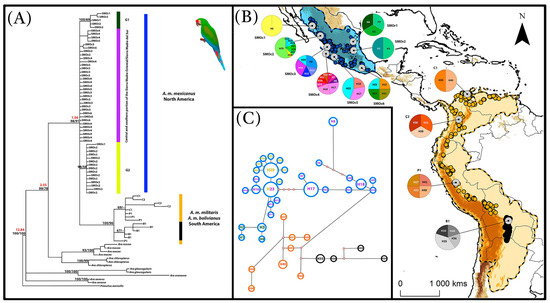Strigops is feminine, because it was ruled to have this gender by the Commission in Direction 26, and stands with this gender on the
Official List.
('Direction' is a disused name for what is now called an 'Official Correction of an Opinion' (see the
Glossary). Names on the OL are subject to the ruling(s) of the Commission in any relevant Opinion(s), including any Official Correction of an Opinion, as per
Art. 80.6.2. This supersedes the normal application of any provision of the Code, including that of Art. 30.1.4.3,
contra what is stated in the paper. See also Art. 80.9.)
The treatment of words like
habroptilus as adjectives follows
David & Gosselin 2002, and is very widely accepted in bird nomenclature.
(
habroptilus is deemed latinized from ἁβρόπτιλος,
habroptilos, soft-feathered -- not found as such in Greek dictionaries but formed according to the rules of formation of compound adjective in Greek, and akin to, e.g.,
ἁβροπέδιλος,
habropedilos, soft-sandalled, or
χλωρόπτιλος,
chlôroptilos, green-feathered, which are adjectives found in dictionaries.)
(Unfortunately, the authors obviously failed to understand the rationale that this treatment was based on, and therefore did not provide any rebuttal of this rationale. They also failed to discuss the potential consequences of its rejection. As noted by D&G 2002, a rejection of this rationale would mean that no word formed according to the rules of formation of compound adjectives in Greek is to be treated as an adjective, unless it is listed as such explicitly in a dictionary. If
habroptilus is not adjectival, then neither are
haematuropygius (now in
Cacatua as
haematuropygia),
pyrrhopterus (now in
Brotogerys as
pyrrhoptera)
, ochrocephalus (now in
Amazona as
ochrocephala),
cyanopygia (now in
Forpus as
cyanopygius),
melanurus,
callipterus and
rhodocephalus (now in
Pyrrhura as
melanura,
calliptera and
rhodocephala),
leptorhyncha (now in
Enicognathus as
leptorhynchus),
xanthogenius (now in
Eupsittula as
xanthogenia), etc., etc.)







